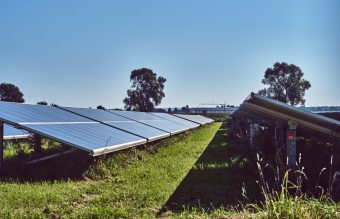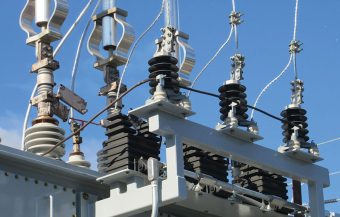
Serbia will accomplish the green transition of its energy sector through the increase of renewable energy sources, the improvement of power grids and energy storage, the promotion of fuels with zero carbon dioxide emissions, and the gradual abolition of fossil fuels. The goal is to transform the sector into a sustainable, efficient, and inclusive system that is adapted and resistant to climate change, with a significant increase in energy efficiency and respect for the principles of a fair transition. We talked with Milena Popović Martinelli, Climate Strategy Delivery Principal for the Western Balkans, about the support provided by the European Bank for Reconstruction and Development (EBRD), challenges created by the energy transition, and plans.
Q: What challenges is the green transition facing, and how does the EBRD support Serbia’s effort in this transition?
A: One of the EBRD’s key priorities in Serbia is to support the acceleration of the energy transition while ensuring the security of the energy supply and boosting economic growth and social development. The EBRD is engaged in many complex aspects of decarbonization, too. We invest in renewable energy sources, and in March of this year, we supported the Pupin project, a 94.4 MW wind farm. Pupin is the second phase of the development of the Kovačica wind farm (which we also co-financed back in 2017) and is the first to obtain financing among bidders at the first market premium auctions. We also support the reconstruction of the Vlasina hydropower plant to extend its useful life and increase the installed capacity, which is significant both for the supply and the balancing of renewable energy in the country.
We recognize that the energy sector is affected by climate change and support our clients in aligning their business models and operations with low-carbon and climate-resilient development principles. While acknowledging the Electric Power Industry of Serbia’s (EPS) role in the country’s effort to decarbonize, the EBRD provides support to the company in developing a decarbonization action plan in accordance with national green ambitions, as well as assessing the impact that climate change may have on business.
Furthermore, through our just transition initiatives, we support the Serbian government in understanding the impact of the energy transition on the most affected regions and communities. We are working to identify and prioritize specific interventions to ensure the transition is fair and inclusive.
IN FOCUS:
- MARIBOR – CIRCULAR ECONOMY IMPLEMENTATION HUB
- SOLAR ENERGY IN SERBIA AND THE COUNTRIES OF THE REGION
- ON THE WAY TO THE ENERGY TRANSITION

Q: How interested are investors in investing in renewable energy sources in Serbia?
A: The Serbian renewable energy market has proven very competitive, and investors recognize its potential. An adequate regulatory framework, with a clearly defined plan and goals, is a prerequisite for creating a favorable business environment. The Serbian market demonstrated that it meets the key criteria related to market premium auctions, at which bids for electricity from wind turbines significantly exceeded the available quota, were competitive, and well below the maximum price. With Serbia’s three-year plan to allocate 1,300 MW of capacity at auctions and the goal of reaching a 45 per cent share in electricity production from renewable energy sources by 2030, we expect that many will carry out new investments in the market.
Q: Are there other aspects of the transition that you consider significant to which the EBRD will pay special attention in the coming period?
A: Renewable energy production is key to decarbonizing the energy sector, but a successful transition requires a holistic approach that also focuses on other priority areas. There is a consensus and a deep understanding of energy demand, which can be seen in implementing energy efficiency projects in public and residential buildings. The EBRD stands out as an international financial institution that pays special attention to the energy rehabilitation of residential (multi-family) buildings, including buildings with the worst energy performance.
In cooperation with the Ministry of Mining and Energy, we are preparing a Public ESCO Project, an innovative format with significant impact and coverage that will be implemented on millions of square meters. As part of the first public call for the project implementation, energy rehabilitation will include up to 1.1 million square meters of residential buildings connected to district heating in 14 Serbian cities. The Public ESCO Project will enable the simultaneous implementation of energy efficiency measures in the most energy-inefficient residential buildings throughout the country. It will be the basis for transitioning from flat-rate billing to billing only for the consumed heat. It will contribute to significant energy savings, reduce emissions and pollution, and improve air quality in numerous towns in Serbia.

Q: What help and support does the EBRD provide in preparing and implementing auctions for solar and wind power plants?
A: With the support of the Swiss State Secretariat for Economic Affairs, the EBRD played a significant role in conducting auctions to allocate market premiums. We supported the Serbian Ministry of Mining and Energy in the implementation of competitive procurement for renewable energy projects and regulatory reform in the energy sector to facilitate the implementation of auctions, which culminated in the successful allocation of 400 MW of wind capacity and 25 MW of solar capacity in the summer of 2023. The first auctions for allocating market premiums based on the format of bilateral contracts for price difference will help develop over 700 MW of new green energy capacities in Serbia. The auctions were conducted in line with the best European practices. The transition to market premiums enables better cost management and significantly benefits the entire energy system. As for the next round, we can expect that the capacities will be determined in accordance with the three-year plan that sets a quota of 300 MW for wind power plants and 100 MW for solar power plants.
Interview by Mirjana Vujadinović Tomevski
Read the whole interview in the new issue of the Energy portal Magazine AGROSOLAR ENERGY AND RES.
